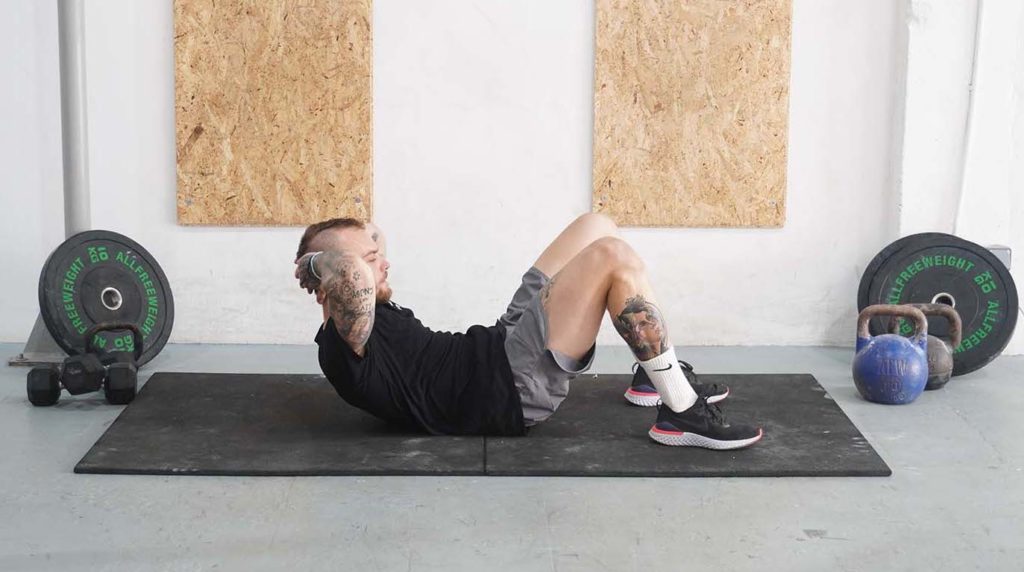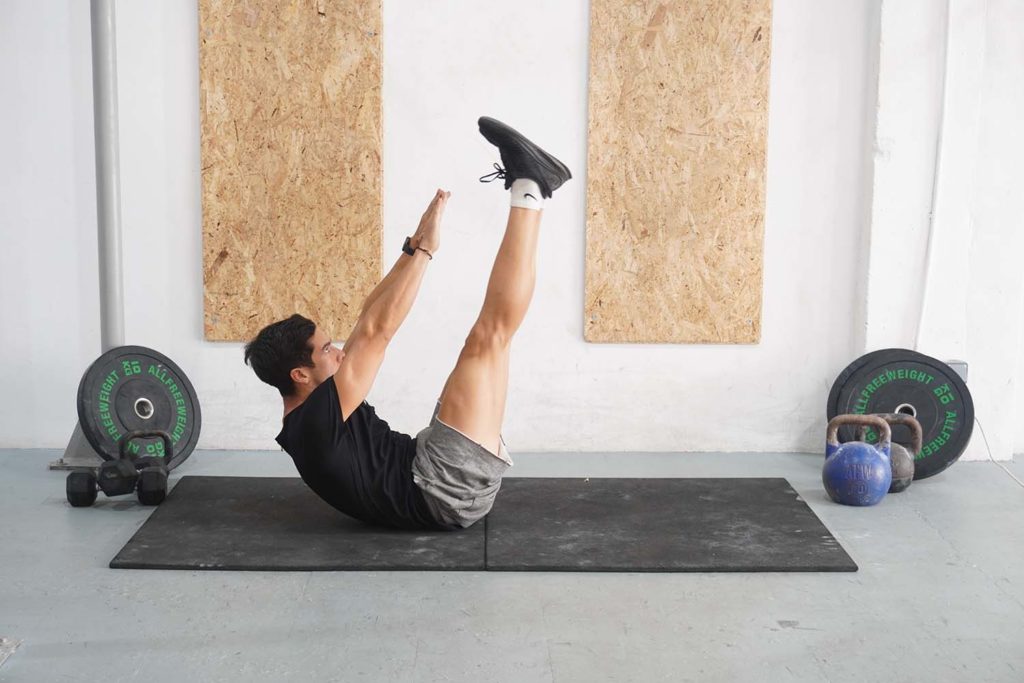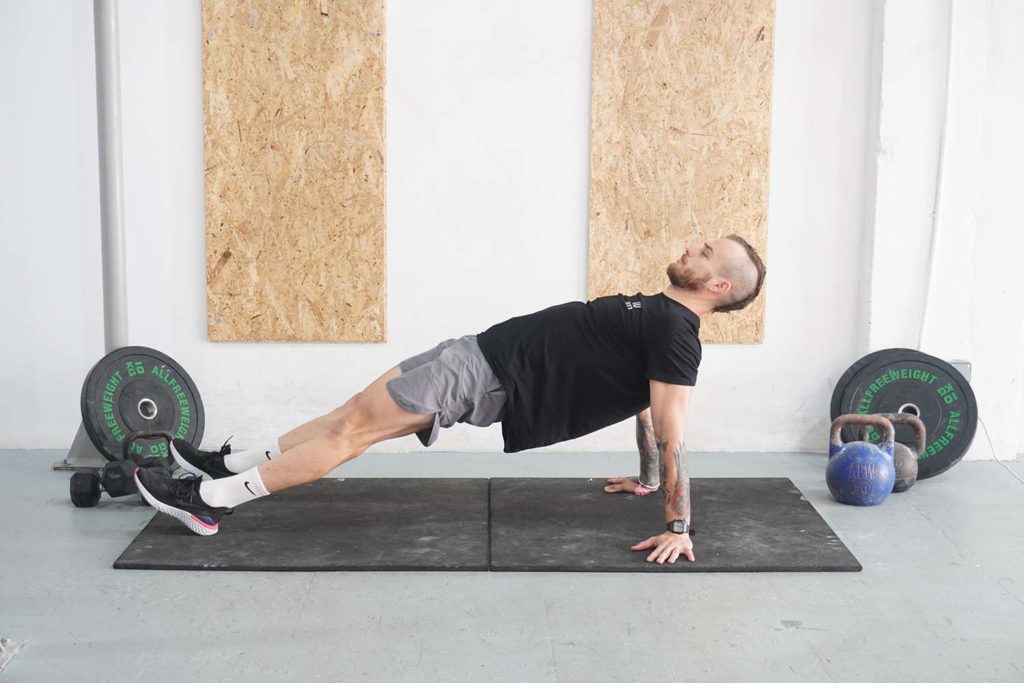What is a Cable Crunch?
Cable crunches are a popular abdominal exercise that offers a fantastic overloading potential and strengthens your midsection. The objective is to set a cable pulley high and attach a rope or straight bar. You then have to grab the attachment, bring your head beneath it, and get down on your knees. Once in position, crunch your torso against the cable’s resistance repeatedly.
The primary benefit of cable crunches is the consistent tension your muscles feel from start to finish. Another benefit is the overloading potential. You can start with light resistance and gradually increase the load as your abs get stronger. On that note, strengthening your ab area is beneficial for your athletic performance and functional fitness. These muscles play an essential role in your stability, posture, strength, and spinal health.
We recommend including cable crunches near the end of your workouts and performing at least 12 to 15 slow and controlled repetitions per set.
How to do a Cable Crunch
- Grab a rope attachment with both hands and have your thumbs facing up.
- Kneel and position the rope behind your head. Both hands should be close to your neck throughout the exercise.
- Once in this position, engage your glutes to produce some degree of posterior pelvic tilt and to engage your abs better.
- Initiate the crunch by inhaling and bringing the rope down and in. Think of the movement as one where you actively crunch and extend your abs instead of having the movement go through your hips.
- Hold the contraction for a moment, exhale, and extend your abs until your back is in a neutral position.
- Repeat.
What muscles does a cable crunch activate?
The primary muscles that work during cable crunches are the abs (rectus abdominis). Our abs span from just below the ribcage to the pelvic bone, and one of their primary function is to provide torso stability (1). Contracting the abs crunches the torso by shortening the distance between the ribs and pelvis, which occurs during cable crunches.
Our transverse abdominis and obliques also work during cable crunches. Their primary job is to provide torso stability (2). Cable crunches also involve our forearms, biceps, and deltoids, which support the cable attachment as we do crunches.
Cable Crunch Vs. Traditional Crunch
Cable and traditional crunches are two safe and effective variations for ab development. Both exercises feature a similar range of motion and involve the same muscles. The primary difference is that traditional crunches leverage your body for resistance. In contrast, cable crunches rely on a cable machine for resistance, allowing more flexibility to adjust the difficulty.
The primary benefit of cable crunches is that you can overload your midsection for a long time by increasing the load gradually. In contrast, traditional crunches offer less flexibility, and your primary way of overload is to do more repetitions or sets.

Another benefit of cable crunches is the consistent tension your muscles experience. As a result, the growth stimulus is stronger, and you’re better able to strengthen and develop all of the involved muscles. Traditional crunches also offer tension, but you mostly feel it at the start of each repetition. As your torso becomes upright, your abs don’t have to work as hard, making individual repetitions less effective.
With that said, traditional crunches are still beneficial, and you can perform them almost anywhere. In contrast, cable crunches require access to a special machine.
Variations and Modifications of the Cable Crunch
1. Standing Cable Crunch
Standing cable crunches are the same exercise, but instead of kneeling, you’re on your feet. The variation works well, especially if you don’t feel like kneeling.
2. Tempo Cable Crunch
Tempo cable crunches are effective in improving the mind-muscle connection and prolonging the time under tension. The objective is to crunch for three to five seconds, hold for a moment, and extend your torso for another three to five seconds.
3. Resistance Band Cable Crunch
While the variation doesn’t offer the same level of flexibility as cable crunches do, using a resistance band is beneficial. The resistance band cable crunch is useful for everyone who wants to perform the movement but doesn’t have regular access to a gym machine. All you have to do is attach a resistance band somewhere overhead, grab it, kneel, and perform crunches.
Mistakes to Avoid
One of the most common mistakes with cable crunches is moving at the hips instead of crunching your abs. Many trainees set themselves up for the movement, get down on their knees, and begin moving their torso up and down. At first glance, doing so seems perfectly okay, but it isn’t. The goal with cable crunches is to engage your abs by crunching your torso: bringing your ribcage closer to your hip bone. Doing so allows you to train the correct muscles, whereas moving your torso up and down works your hip flexors.
Another mistake related to cable crunches is using too much weight. Prevailing wisdom suggests that more is better, so many trainees prioritize the load they are using over proper technique and solid muscle activation. We recommend picking a weight that allows you to do at least 12 to 15 slow and controlled repetitions.
The third mistake with cable crunches is using jerking motions to complete repetitions. Doing so often results from using too much weight as trainees compensate for their lack of strength with momentum. Like the previous two mistakes, doing so offers no benefits and only robs your abs of the tension they need to grow and strengthen.
Similar Exercises to the Cable Crunch
V Up

V ups are an effective bodyweight exercise that strengthens your abs. The objective is to lie on your back, bring your feet together, extend your arms back, and take a breath. Once in position, raise your arms and legs to the ceiling, tapping your feet with your hands.
Decline Crunch
Similar to cable crunches, the decline crunch is an effective exercise that strengthens your abs. The goal is to lie on a decline bench, secure your legs, and crunch repeatedly. Doing so forces your abs to work, grow, and strengthen.
Reverse Plank

The reverse plank is a slightly unorthodox exercise that strengthens a range of muscles in the body (3). Most notably, assuming a reverse plank position strengthens your hamstrings, glutes, back, and midsection. Your abs flex isometrically and offer torso stability during the pose.

